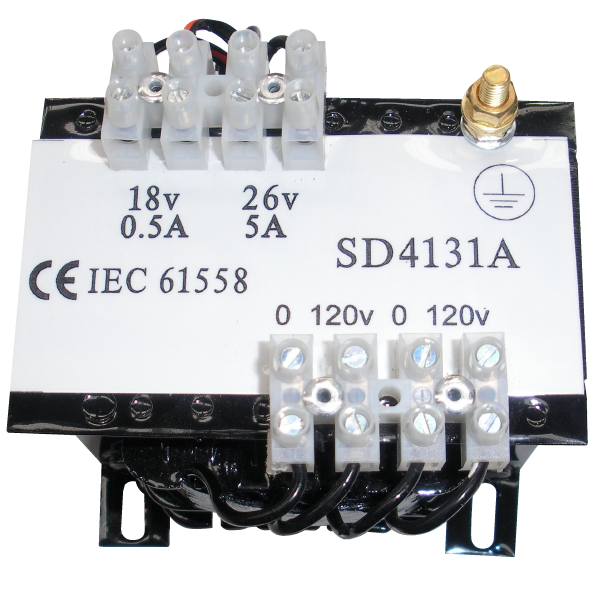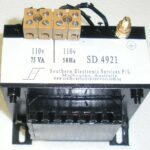A power transformer is an electrical device that is designed to transfer electrical energy from one circuit to another through electromagnetic induction. It is used to change the voltage level of an alternating current electric power supply to match the specific requirements of electrical devices, such as motors, lights, and other appliances.
Power transformers play a crucial role in the electrical grid by enabling the transfer of electrical energy from power plants to homes and businesses. They are responsible for transforming high-voltage electrical energy into low-voltage energy that can be safely used by homes and businesses. Without power transformers, the electrical grid would not be able to function effectively, and electrical devices would not be able to operate properly.
By the end of this post, you should have a clear understanding of the basic components of a power transformer, the physics behind its functioning, and the different types of power transformers available. Additionally, the post will explore the advantages of using power transformers and their importance in the electrical grid.
Components of a Power Transformer
1. Primary Winding: The primary winding is the first coil of wire in a power transformer. Primary transformer windings are often connected to the high-voltage electrical supply and are responsible for receiving the electrical energy.
2. Secondary Winding: The secondary winding is the second coil of wire in a power transformer. It is connected to the electrical device that requires energy and is responsible for delivering the transformed electrical energy.
3. Core: The core is the metallic material that is used to connect the primary and secondary windings. It is typically made of laminated iron or steel and is designed to provide a path for the magnetic field to flow through.
How the Components Work Together
When electrical energy is applied to the primary winding, a magnetic field is created that flows through the core.
This magnetic field induces an electrical current in the secondary winding, thereby transferring the electrical energy from the primary winding to the secondary winding.
The number of turns in the primary and secondary windings determines the voltage transformation ratio, which is used to calculate the voltage level that will be delivered to the electrical device.
The Physics of Power Transformers
Faraday’s Law of Electromagnetic Induction
Faraday’s law of electromagnetic induction is a fundamental principle that is used to explain how power transformers work. According to this law, when a magnetic field passes through a conductor, it generates an electrical current in the conductor. The amount of electrical current generated is proportional to the rate of change of the magnetic field.
How Electromagnetic Induction Works in a Power Transformer
In a power transformer, the changing magnetic field created by the electrical energy applied to the primary winding induces an electrical current in the secondary winding. This process is known as electromagnetic induction, and it is the key mechanism that enables the transfer of electrical energy from the primary winding to the secondary winding.
The induced electrical current in the secondary winding is then used to power the electrical device that is connected to the secondary winding.
Types of Power Transformers
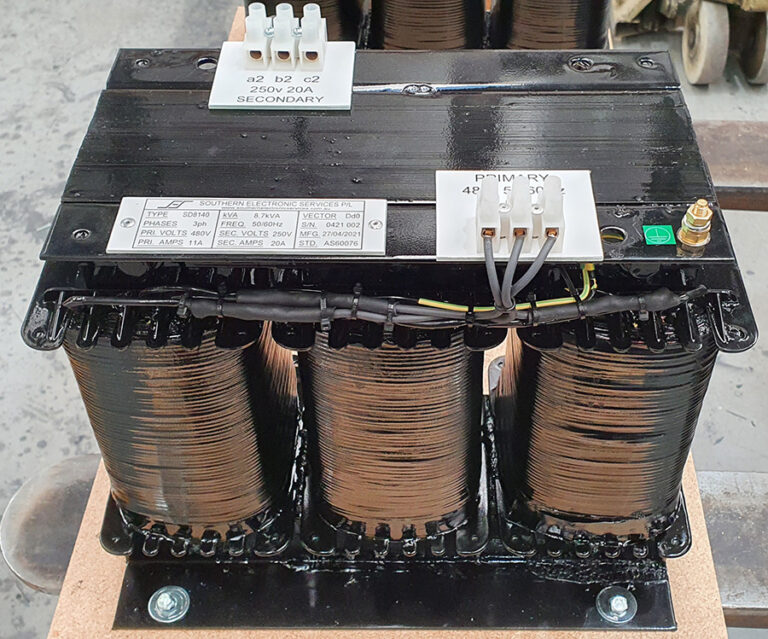
Step-Up Transformers
Step-up transformers are used to increase the voltage level of an electrical supply. They are typically used in power transmission systems to transfer electrical energy over long distances. They convert voltage from low levels to higher voltage levels, and the amount of electrical energy that can be transmitted is increased, reducing the amount of energy lost as heat during transmission.
Step-Down Transformers
Step-down transformers are used to decrease the output voltage level of an electrical supply. They are typically used in homes and businesses to reduce the high-voltage electrical energy received from the electrical grid to a safe and usable low-voltage level. This allows electrical devices to operate safely and efficiently.
Isolation Transformers
Isolation transformers are used to isolate electrical devices from the electrical grid. They are typically used in medical equipment, laboratory equipment, and other sensitive electrical devices to protect them from electrical noise and interference. Isolation transformers are designed to have a high degree of electrical isolation between the primary and secondary windings, providing a safe and reliable electrical supply.
Auto Transformers
Auto-transformers are a type of power transformer that uses only one winding for the primary and secondary circuits. They have the advantage of being more efficient and less expensive than other types of power transformers, but they typically have lower power output capabilities. Auto-transformers are typically used in applications where power levels are relatively low, and efficiency is important.
Advantages of Power Transformers
Increased Voltage
By increasing the voltage level of an electrical supply, power transformers can help to reduce the amount of energy lost as heat during transmission. This increases the efficiency of the electrical grid and enables electrical energy to be transmitted over long distances with minimal loss.
Improved Power Quality
Power transformers can improve the quality of the electrical supply by reducing the amount of electrical noise and interference. This is important for sensitive electrical devices, such as medical equipment, laboratory equipment, and computers, which can be damaged by electrical noise and interference.
Increased Energy Efficiency
By reducing the amount of energy lost as heat during transmission, power transformers can help to increase the overall energy efficiency of the electrical grid. This is important for reducing the environmental impact of electricity generation and helping to conserve natural resources.
Conclusion
Power transformers play a crucial role in the electrical grid by enabling the transfer of electrical energy from power plants to homes and businesses. They are responsible for transforming high-voltage electrical energy into low-voltage energy that can be safely used by homes and businesses.
At Southern Electronic Services, we offer a wide range of power transformers, from small isolation transformers to step-up transformers. Contact us today to learn more about power transformers and how they can help improve the efficiency of your electrical system. We look forward to assisting you!
What is a distribution transformer?
Distribution transformers are power transformers that step down the voltage of power generated at power plants, so it can be used safely by homes and businesses. Distribution transformers enable power distribution from power plants to end users. They have a primary winding which is connected to an electrical power source, and a secondary winding which has a much lower voltage level than the primary winding.
What is an instrument transformer?
Instrument transformers are power transformers that are designed to provide a low voltage and current output, which is used to power electrical instruments. These transformers typically have a primary winding which is connected to an electrical power source, and a secondary winding with a much lower voltage level than the primary winding. The secondary winding is then connected to an electrical instrument, such as a voltmeter or ammeter.
Next Post
Choosing the Right Electric Transformer for Your Power Needs
February 17, 2023Other News
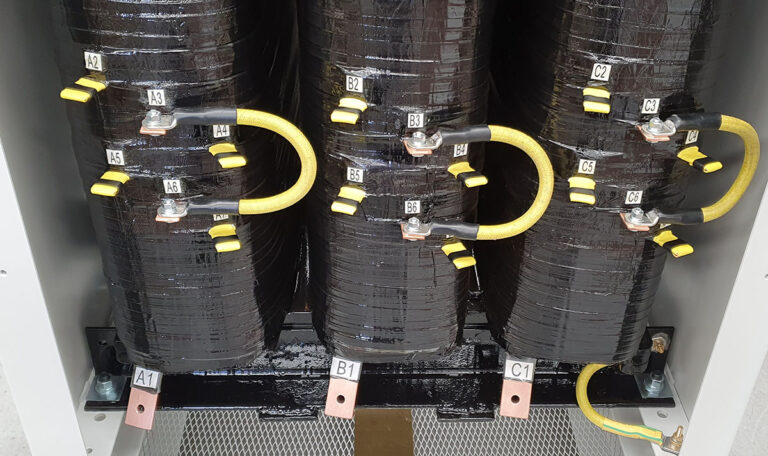
Function of Transformers in Data centers
The Growing Demand for Data Centers in a Cloud-Based, AI-Driven World The digital age has witnessed explosive growth in data generation, storage, and processing, leading to a sharp rise in the construction of data centers globally. With the increasing adoption of cloud-based storage and the rapid expansion of artificial intelligence (AI) technologies, the world’s computing…
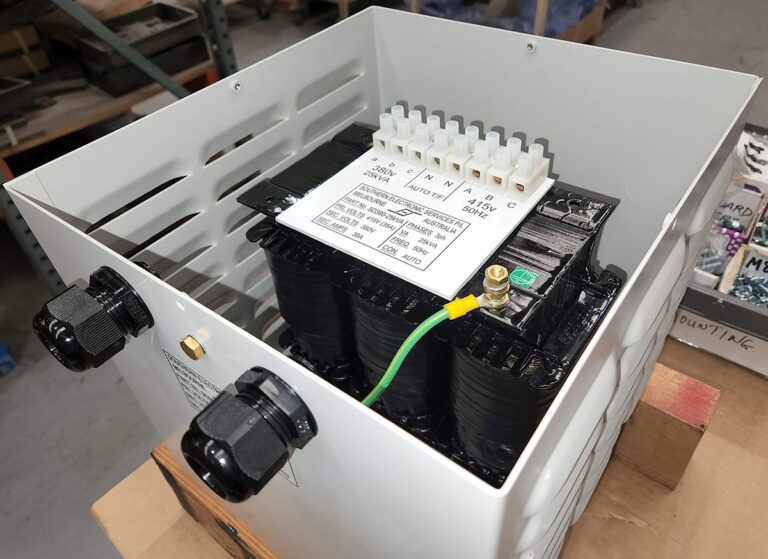
Important Features to Consider When Choosing a Step-Down Transformer
The step-down transformer is one of the most commonly used devices for adjusting AC voltage. Not only is this a great tool for safety reasons, but it’s also ideal for reducing energy consumption and lowering monthly utility bills. Because there are so many options available, choosing the right step-down transformer can be a daunting task….

